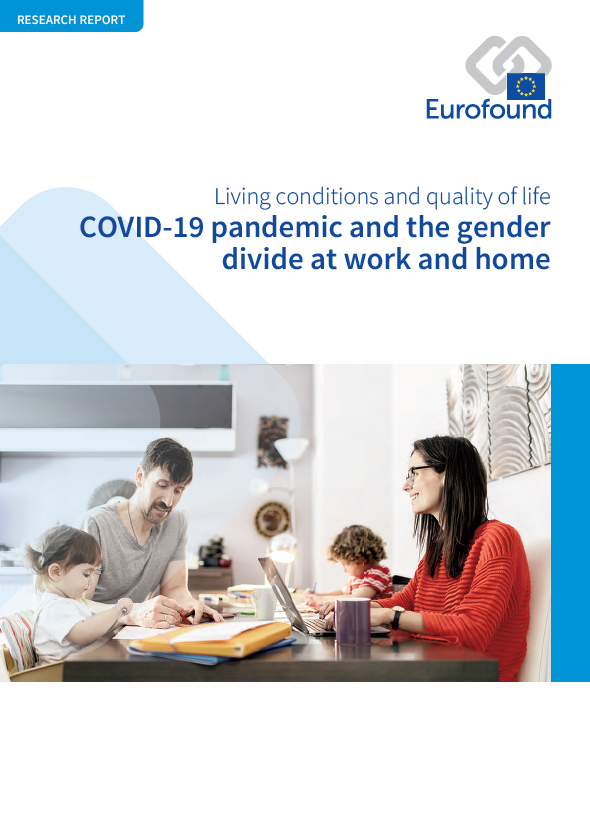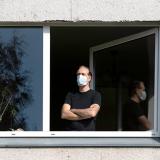
COVID-19 pandeemia on rõhutanud ebavõrdsust Euroopa ühiskondade mitmes mõõtmes, sh naiste ja meeste ebavõrdsust mitmes põhivaldkonnas. Käesolev aruanne vaatleb enne COVID-19 kriisi olemas olnud soolist ebavõrdsust ja kirjeldab, kuidas on pandeemia mõjutanud soolisi lõhesid. Aruandes analüüsitakse ka kogu ELis riikide valitsuste mitmesuguseid poliitikareaktsioone sooliste lõhede käsitlemisel ja nende laienemise ennetamisel pandeemia ajal. Pandeemia mõju tööhõivele ELi tasandil on olnud tervikuna märkimisväärselt sooneutraalne, teatud nüanssidega eri sektorites ja sotsiaal-majanduslikes rühmades. Varasemad tasustama tööga seoses olemas olnud soolised lõhed on püsinud, põhjustades töö- ja eraelu konflikte, eelkõige väikelastega ja kaugtöötavate emade seas. Aruandes kirjeldatakse ka soolise ebavõrdsuse väljavaateid Euroopas, osutades teguritele, mis kujundavad naiste ja meeste võrdsust tulevikus: sooline segregatsioon tööturul, soolised lõhed kaug- ja hübriidtöös ning soolõime poliitikakujundamisel – eelkõige seoses hoolduse ja hooldusteenustega.
Key findings
Tavapärased soorollid, milles naised on peamised hooldajad, on siiani sügavalt juurdunud ühiskondlikes normides – nii naistele kui ka meestele – ning see kajastub tasustatud ja tasustamata töös. Lõhed väljenduvad jätkuvas soolises ebavõrdsuses tööturul ja mujal, ilmnedes mitmesugustes näitajates, nt töötingimused, vaesus, tööaeg ning töö- ja eraelu konfliktid.
COVID-19 pandeemia mõju tööturule oli ELi tasandil märkimisväärselt sooneutraalne, kajastades osaliselt naiste üleesindatust pandeemia tõttu suletud sektorites, kuid ka nende kontsentreerumist kaugtöövõimalusega töökohtadel ja olulistes sektorites. Uuringute tulemused näitavad siiski, et COVID-19 kriisi ajal oli naiste seas suurim töökohtade kaotus kõige vähem tasustatud töökohtadel, kuid meeste seas jaotus töökohtade kaotus ühtlasemalt.
Töö- ja eraelu konfliktid suurenesid COVID-19 pandeemia ajal järsult, eelkõige väikelastega ja kaugtöötavate naiste seas. Euroopa taastumisega pandeemiast tuleb poliitikakujundajatel teadvustada asjaolu, et vabatahtlik, paindlik töökorraldus – mida tõenäolisemalt kasutavad naised – võib tähendada ka suuremat tasustamata töö hulka ja väiksemat nähtavust töökohal, millel on pikaajalised tagajärjed karjääriarengule, palgale ja pensionidele.
COVID-19 kriis on esile toonud hooldusteenuste olulise rolli tööturul naiste osaluse, finantskindluse ja üldise heaolu toetamisel. On oluline, et liikmesriigid toetaksid kvaliteetsete, juurdepääsetavate ja taskukohaste hooldusteenuste pakkumist kõigis valdkondades, käsitledes samas töötajate vajakuid ja parandades töötingimusi nendes sektorites.
Pandeemiajärgne taastumine on võimalus muuta tõeliselt soonorme, käitumist ja poliitikauuendusi. Poliitikakujundajatele, sh sotsiaalpartneritele, on oluline prioriseerida sooküsimusi, jätkates samas arengu seiret ja hindamist.
The report contains the following table and figures.
- Table: Gender equality policy measures analysed as part of the research
- Figure 1: Annual labour market indicators, 2002–2019, EU27
- Figure 2: Employment rate in 2019, by gender and country (%)
- Figure 3: Average number of actual hours of work a week in main job, annual data by gender, 2002–2019, EU27 (hours)
- Figure 4: Main reason for economic inactivity, by gender, 2019, EU27 (%)
- Figure 5: Economic inactivity due to care responsibilities, family reasons, or personal reasons in 2019, by gender and country (%)
- Figure 6: Top 10 employment sectors, 2019, EU27 (% of total employment by gender)
- Figure 7: Mean hours spent on unpaid work, by gender and year, EU27 (hours per week)
- Figure 8: Mean hours spent on unpaid work in 2016, by gender and country (hours per week)
- Figure 9: Mean total working time among employed individuals in 2016, EU27 (hours per week)
- Figure 10: Mean hours spent on total work in 2016, by gender and country (hours per week)
- Figure 11: Frequency of sporting, cultural or leisure activity participation by gender in 2015, EU27 (%)
- Figure 12: Work–life conflict by gender and parenthood status, EU27 (%)
- Figure 13: Risk of depression by gender and year, EU27 (%)
- Figure 14: Annual labour market indicators, 2019–2021, EU27 (%)
- Figure 15: Monthly unemployment rate by gender, EU27 (%)
- Figure 16: Quarterly employment rate by gender (change from Q3 2008/Q4 2019), EU27 (percentage points)
- Figure 17: Share of employment in sector groups by gender in 2019, EU27 (% of total employment by gender)
- Figure 18: Change in employment compared with Q2 2019, in sector groups by gender, EU27 (%)
- Figure 19: Change in annual employment rate compared with 2019, by gender and age group, EU27 (percentage points)
- Figure 20: Employment shifts (thousands) by gender and job–wage quintile: two crisis periods compared, EU27
- Figure 21: Change in annual employment rate by gender and country (from 2019 to 2020) (percentage points)
- Figure 22: Absence from work by main reason, EU27 (thousands)
- Figure 23: Changes Q4 2019 to Q4 2021 in average number of actual weekly hours of work in main job by gender, EU27 (hours)
- Figure 24: Total duration of school closures up until March 2022, by country (weeks)
- Figure 25: Mean hours spent on unpaid work, by gender, EU27 (hours per week)
- Figure 26: Mean hours spent on childcare, by gender and presence of children in the household, EU27 (hours per week)
- Figure 27: Mean hours spent on unpaid work by gender, EU27 (hours per week)
- Figure 28: Mean hours spent on unpaid work, by age and gender, EU27 (hours per week)
- Figure 29: Sharing of unpaid work within couples, EU27 (%)
- Figure 30: Change in division of unpaid work within couples, EU27 (%)
- Figure 31: Change in division of childcare and education of children within couples, depending on both partners’ teleworking status, EU27 (%)
- Figure 32: Mean total working time among employed individuals, EU27 (hours per week)
- Figure 33: Changes in health during the pandemic by gender, EU27 (%)
- Figure 34: Risk of depression during the pandemic by gender, EU27 (%)
- Figure 35: Optimism about future during the pandemic by gender, EU27 (scale 1–5)
- Figure 36: Risk of poverty or social exclusion by gender, EU27 (%)
- Figure 37: Work–life conflicts by gender, EU27 (%)
- Figure 38: Work–life conflicts, by gender and parenthood status, EU27 (%)
- Figure 39: Difficulties concentrating on job because of family responsibilities, by teleworking and parenthood status, EU27 (%)
- Number of pages
-
86
- Reference nº
-
EF22010
- ISBN
-
978-92-897-2275-9
- Catalogue nº
-
TJ-07-22-930-EN-N
- DOI
-
10.2806/015588
- Permalink
Cite this publication
Eurofound (2022), COVID-19 pandemic and the gender divide at work and home, Publications Office of the European Union, Luxembourg.
